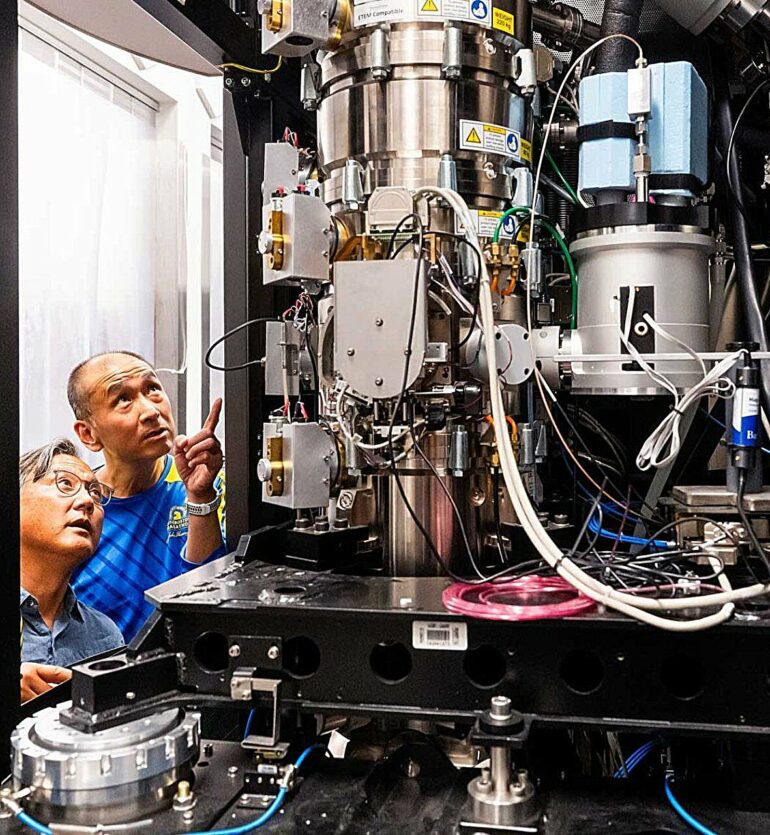For years, scientists have thought that TGF-Beta, a signaling protein that holds sway over an astonishing array of cellular processes from embryonic development to cancer, could only do its work once it escaped a lasso-like “straitjacket.”
But now, using cryogenic electron microscopy (cryo-EM), a powerful technique that enables scientists to make moving three-dimensional models of molecules at atomic resolution, experts at UC San Francisco have discovered that this protein is far craftier than they thought.
It shakes and wiggles from within its straitjacket, extending a few fingers to activate a neighboring receptor despite being encased at the surface of the cell.
The findings, published on Sept. 16 in Cell, upend decades-old dogma on how TGF-Beta works. It could help scientists improve the many therapies aimed at controlling it, including an important new class of cancer therapies called checkpoint inhibitors that have worked less well than expected.
And on a more basic level, the work suggests an even wilder picture than scientists had imagined, as important players like TGF-Beta morph into unexpected shapes to accomplish the seemingly impossible in our cells.
“The field has historically focused on stabilizing these kinds of signals to get a high-resolution image, but by doing that, it has ignored how flexibility could be part of their function,” said Yifan Cheng, Ph.D., UCSF professor of cellular and molecular pharmacology and co-senior author of the paper. “For TGF-Beta, this flexibility plays a vital role, and we think it could explain how other poorly-understood signals work—with implications for understanding and treating disease.”
An immobilized signal manages to pass its message
Four years ago, Cheng and co-senior author Stephen Nishimura, MD, discovered that TGF-Beta could signal to a receptor even when bound within its straitjacket, whose scientific name is latency-associated protein (LAP).
The result flew in the face of decades of science suggesting that TGF-Beta needed to be released by LAP to reach its receptor. If it weren’t released, the thinking went, basic processes, like how the body grows new cells without growing tumors, would go awry.
But when the team engineered a permanent tether between TGF-Beta and the straitjacket in mice, they survived. TGF-Beta could still do its job even while bound by LAP.
Cheng and Nishimura took a closer look using cryo-EM, their specialty.
Cryo-EM involves flash freezing a mixture of proteins and taking hundreds of thousands of pictures of them to see how they interact. Typically, powerful algorithms line up these microscopic snapshots to reveal the most common—and therefore most important—arrangements of proteins.
But this approach can leave out a lot of possibilities, and previous studies only envisioned two of them: Either TGF-Beta was bound inside LAP and therefore inert; or it was free to float from one cell to the next and unlock its receptor.
Knowing that TGF-Beta was capable of unlocking its receptor while bound by LAP, the UCSF scientists suspected that these proteins might have many more states than just two, which—using typical cryo-EM approaches—would appear as a blur and be ignored.
“In cryo-EM, people tend to report on what they can see most clearly, but in our data, we realized there could be meaning in the fuzziest parts of the picture,” said Nishimura, who is a professor of pathology at UCSF. “So that’s what we focused on.”
Meaning in molecular motion
To get a better view of TGF-Beta moving in its straitjacket, the scientists methodically stabilized different parts of either LAP, TGF-Beta, or both, and then used cryo-EM to see how these artificial configurations of the molecules interacted with TGF-Beta’s receptor.
In each successive experiment, the fuzziness seen in the data—known as entropy—traveled to other spots on TGF-Beta, suggesting they could still move despite the straitjacket.
That enabled TGF-Beta to stick just enough of itself outside the LAP to be detected by the TGF-Beta receptor. The motion was short-lived. But by systematically constraining the system and taking snapshots of it, Cheng and Nishimura amassed the clearest picture yet of the signal doing the seeming impossible.
The findings change the fundamental understanding of TGF-Beta and many other signals that govern communication in and between cells. Rather than just flipping between discrete shapes, these molecules sometimes get the job done through more fluid motions.
“From cell communication to cell surface molecules, to TGF-Beta, and then to disease modeling and structural biology, we hope these results can trigger people to think differently,” Cheng said. “There are clearly more rich discoveries to be made in the data we dig up with cryo-EM.”
Other UCSF authors are Mingliang Jin, Robert I. Seed, Guoqing Cai, Tiffany Shing, Li Wang, Saburo Ito, Anthony Cormier, Stephanie A. Wankowicz, Jillian M. Jespersen, Jody L. Baron, Nicholas D. Carey, Melody G. Campbell, Zanlin Yu, Weihua Wen, Jianlong Lou, and James Marks.
More information:
Mingliang Jin et al, Dynamic allostery drives autocrine and paracrine TGF-β signaling, Cell (2024). DOI: 10.1016/j.cell.2024.08.036
Provided by
University of California, San Francisco
Citation:
Scientists discover how TGF-Beta sends its message even while tethered to the cell membrane (2024, September 16)



